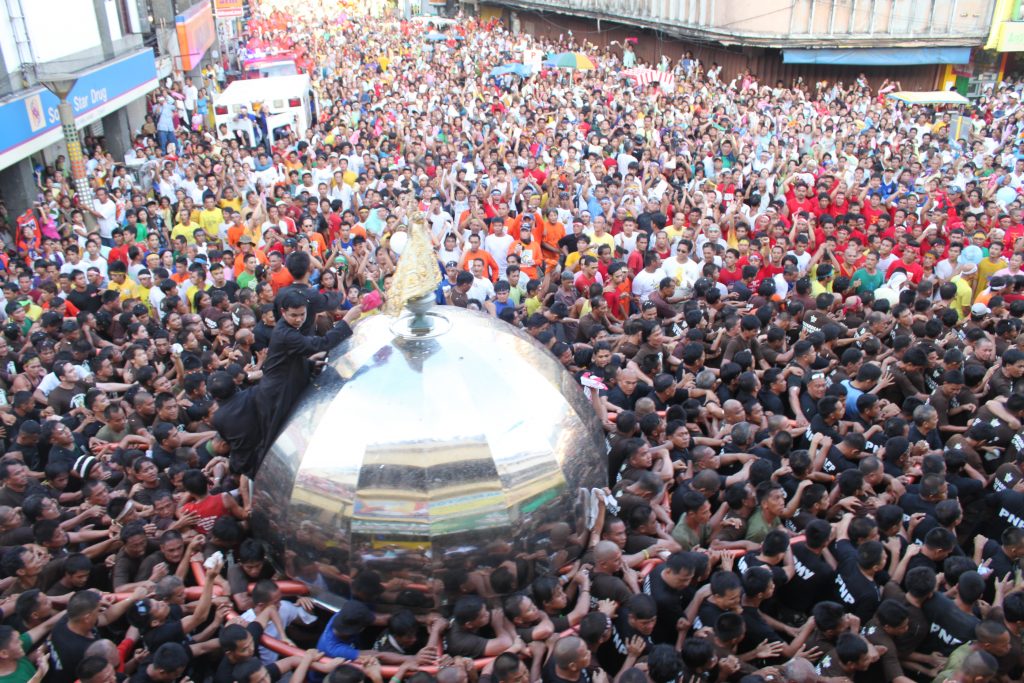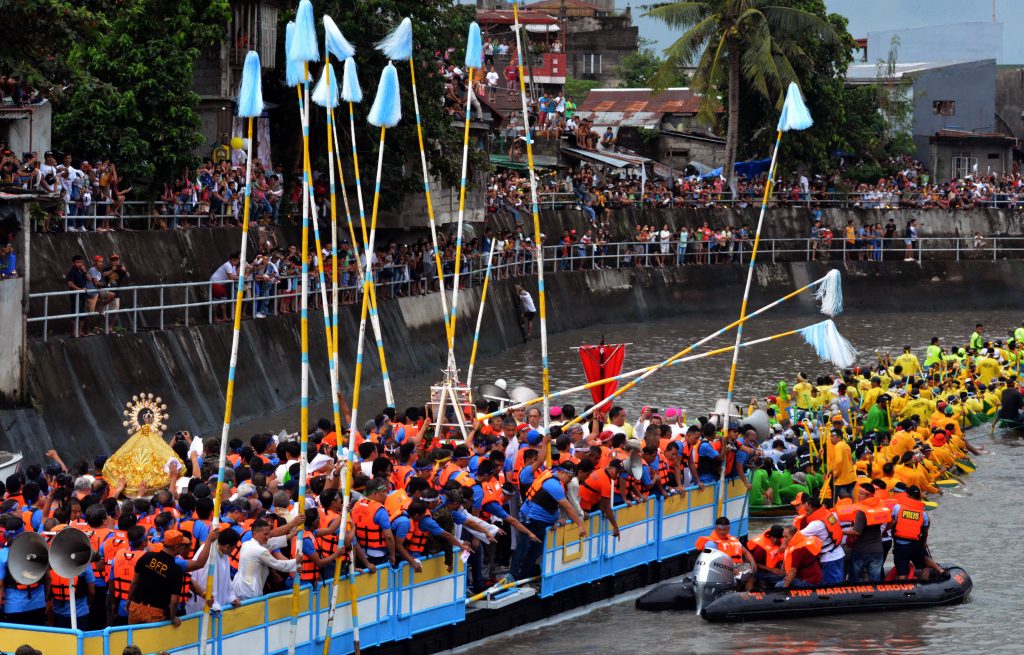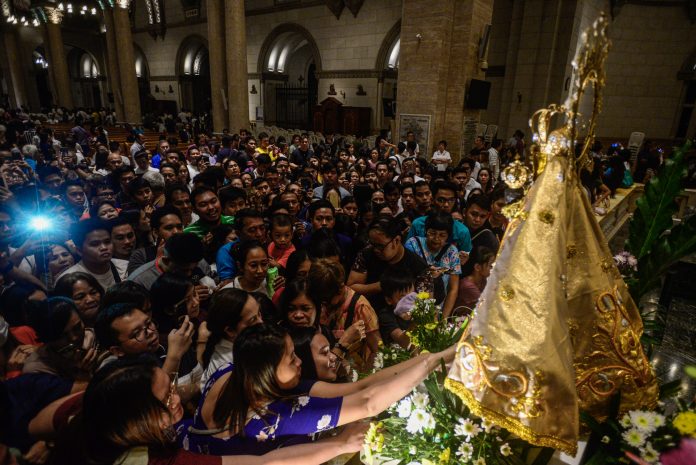There will be no “traslacion,” the religious procession attended by millions of devotees, and no fluvial procession during this year’s celebration of the Feast of Our Lady of Penafrancia in Naga City.
Church and government leaders have announced that the traditional Penafrancia festivities will be toned down to the barest minimum due to the coronavirus pandemic.
“While we cancel the traditional ‘traslacion’ and fluvial processions, let us take this as an opportunity for the devotion to become more distinctive and rooted in our families,” said Archbishop Rolando Tria Tirona of Caceres in a letter to the faithful.
He invited the faithful instead to reflect on the theme “Fostering Dialogue and Harmony in the Spirit of Mary’s Gentleness and Humility” during observance of the feast.
“The changes in our celebration should inspire us to discover how our faith can lead us to be gentle and humble in receiving the grace of God in the face of this pandemic,” said the prelate.
He expressed his gratitude to the people of the Bicol region for their continuous devotion to the Lady of Penafrancia and for imploring her maternal protection.
Instead of the traditional novena to the Divino Rostro, or Face of Christ, from Sept. 2 to 10 and the novena to the Our Lady of Peñafrancia from Sept. 11 to 19 at the Peñafrancia Shrine and Basilica Minore, devotion is encouraged in the homes.
The novena prayers and guide have been made available through social media and the website of the Archdiocese of Caceres.

While parishes in the archdiocese will be holding novena Masses, all public Mass are required to adhere to necessary health protocols.
The traditional “Pagsungko ni Ina” or visits of the revered image will be held in parishes but there will be no procession before the month of September.
The widely-attended fiesta Mass on Sept. 20, Solemnity of the Our Lady of Peñafrancia, will be streamed live from the Basilica Minore. Parishes are expected to air the live streaming in their areas.
Archbishop Tirona urged everyone to attend the novena Masses in their parishes or follow livestream broadcasts.
Nobody will be allowed to kiss and touch images. There will be no imposition of the “manto,” the mantle or cape of the icon, believed to have healing powers.
All forms of religious processions are cancelled this year while the images of the Divino Rostro will remain at the Peñafrancia parish church and that of the Our Lady of Peñafrancia will stay at the Basilica Minore.
The Archdiocese of Caceres is celebrating this year the 138th year of the Feast of the Divino Rostro and the 310th year of the feast of the Our Lady of Peñafrancia.
Every year, millions of devotees join the religious procession of the wooden statue of the Virgin Mary, supposedly a copy of the original image in Spain that has been venerated in the Philippines’ region of Bicol since the 1700s.
A Spanish priest supposedly ordered a local artisan to carve an image patterned after a picture he carried with him and started the devotion to Mary, called “Ina” or mother, by the locals.

The deep-rooted devotion to the Virgin Mary has been handed from one generation to another for the past 300 years.
Every year, devotees pass through an 11-meter high arch dedicated to the Our Lady of Peñafrancia to signify their devotion to the Blessed Mother.
Barefoot men called the “voyadores” would then carry the image in a religious procession in an annual ritual of piety and religious fervour.
They would bring the image of the Virgin Mary from a shrine to the river for a “fluvial procession,” which usually lasts five hours, until it reaches a dock near the city’s cathedral
The “voyadores” would race each other to carry the palanquin in the belief that doing so would cleanse their sins and heal their illnesses.
No women are allowed to board the virgin’s pagoda or float supposedly because no other woman except the Our Lady of Penafrancia is the center of the celebration.
This belief has spawned the superstition that if a woman boards the pagoda, it would sink. No politician is allowed on the pagoda.
Naga City was proclaimed the Pilgrimage Capital of the Bicol Region and the top tourist destination through in 2010 because of the annual celebration.









